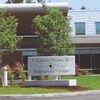Nonprofits anticipate wave of transitions
 PHOTO / Tim Greenway
Maine Association of Nonprofits Executive Director Scott Schnapp.
PHOTO / Tim Greenway
Maine Association of Nonprofits Executive Director Scott Schnapp.
A wave of leadership transitions, largely due to retirements, has begun in Maine's nonprofit sector.
But there is some question as to whether the sector as a whole is prepared to make the transitions as smoothly as possible.
Preparing for this wave of transition necessitates a holistic approach to leadership development, says Scott Schnapp, executive director of the Portland-based Maine Association of Nonprofits, a management support, leadership development and advocacy organization.
“It's not just about the person at the top,” Schnapp says. “It's about fostering leadership within the organization. Recruiting top talent also involves a thoughtful compensation strategy.”
The accelerating pace of leadership transitions took its time coming. According to 2014 report entitled “Leadership New England”— a survey of more than 1,200 nonprofit staff and board leaders from throughout New England, conducted by Boston-based Third Sector New England — a wave of leadership transitions was expected a decade ago, as baby boomers headed toward retirement.
Schnapp stresses that the for-profit sector faces the same situation, and the rate of leadership transitions at nonprofits is likely no greater than the rate among for-profits. The recession kept people in their jobs, but the report reveals that many nonprofit leaders are ready to move on.
“The nonprofit sector in New England faces a looming leadership transition,” the report says. “A significant number of leaders have served in their current positions for more than 10 years, over half are age 55 or older and many have worked in the nonprofit sector for decades.”
Sixty-four percent of respondents said they will leave their current positions within five years; 30% reported they will leave within two years and 9% within one year.
The report says most nonprofits are unprepared for transitions, lacking succession plans, a deep bench of talent and sustainability strategies to strengthen both staff and board leadership. The problem is exacerbated, according to the report, by the challenges of fund development, strains between leaders and their boards, and undercapitalization and the consequent underinvestment in leadership development.
“These findings are particularly concerning as the sector is now beginning to experience the departure of boomer leaders that has been predicted for years,” the report says. “In the face of these departures, investing in core operations and the leadership pipeline for nonprofits is essential. But support for developing leaders in the nonprofit sector is far from the norm. In fact, over the past 20 years, annual foundation support for leadership development has totaled just 1% of total annual giving — a bewildering level of underinvestment given the role that nonprofits play in our society and the high expectations that foundations and others place on nonprofit leaders.”
Maine's environment for nonprofits is even more challenging than the rest of New England, says Schnapp, given its situation as a poor rural state relative to the rest of the country, with a challenging geography and a small corporate presence with which to partner. Maine also has the highest median age in the nation, which could exacerbate the rate of transition, he says.
Overall, Schnapp says, he views leadership transitions as opportunities to revitalize organizations and cultivate new relationships between partners.
“I think the process of how organizations go through transitions ultimately dictates success or failure,” Schnapp says. “The sector is extraordinarily adaptive. It always has been, both in the positive and negative. Businesses do the same thing. You have to seize opportunities and you have to weather challenges.”
Read more
Maine Association of Nonprofits appoints new executive director










Comments